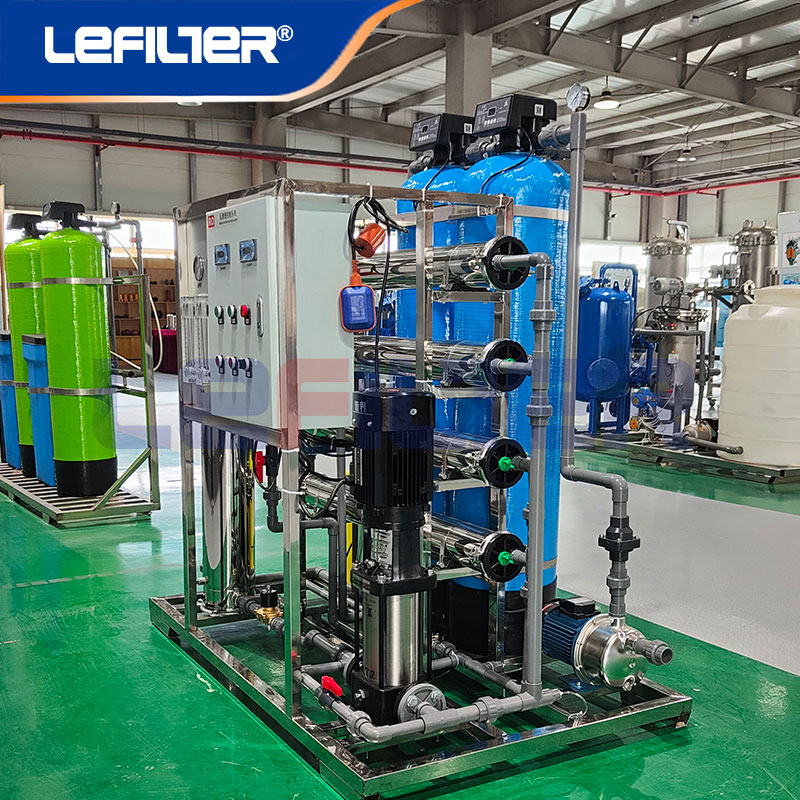Zero Liquid Discharge (ZLD) and Sustainable Water Management
DATE:2024-12-11 Number of views: 1 Source:dongwenhui
Water is a critical resource in power plant operations, used for cooling, steam generation, and emissions control. As concerns over water scarcity and environmental degradation intensify, Zero Liquid Discharge (ZLD) systems have emerged as a key solution for sustainable water management. These systems ensure that all wastewater is treated, purified, and reused, leaving no discharge into the environment.
We explore the role of ZLD technologies in power plants, their benefits, challenges, and how they contribute to meeting stringent environmental regulations while conserving water resources.
What is Zero Liquid Discharge (ZLD)?
ZLD is an advanced water treatment process that recovers and reuses wastewater completely. This involves removing all contaminants, recycling water, and extracting solid residues for safe disposal or repurposing. ZLD systems typically include several stages, such as pre-treatment, reverse osmosis (RO), brine concentration, and thermal evaporation.
How ZLD Works in Power Plants
1. Pre-Treatment
The process begins with pre-treatment systems that remove large particles, oil, grease, and organic matter. This step prepares the wastewater for further purification, ensuring the longevity and efficiency of downstream equipment.

2. Membrane Filtration
Reverse osmosis and ultrafiltration membranes are used to separate dissolved solids from water. These membranes are highly effective, achieving up to 99% impurity removal.

3. Brine Concentration
After membrane filtration, the remaining brine is concentrated using advanced brine concentrators. This step significantly reduces the volume of waste.
4. Thermal Evaporation
The concentrated brine is subjected to evaporation in crystallizers or evaporators, where water is vaporized and collected for reuse, and solids are left behind for disposal.
5. Solid Waste Management
The solid residues, often salts and other minerals, are either disposed of in landfills or repurposed for industrial applications, such as construction or manufacturing.
Benefits of ZLD Systems
Water Conservation
By recycling water, ZLD systems reduce freshwater consumption, crucial in regions facing water scarcity.Environmental Compliance
ZLD eliminates the discharge of pollutants into natural water bodies, ensuring compliance with strict environmental regulations.Operational Cost Savings
While the initial investment in ZLD systems is high, the long-term benefits of water reuse and reduced waste management costs offset these expenses.Resource Recovery
Extracted solids can be repurposed, adding value and reducing waste.Enhanced Corporate Reputation
Adopting sustainable practices like ZLD demonstrates environmental responsibility, enhancing a company’s public image.
Challenges in Implementing ZLD
1. High Initial Costs
ZLD systems require significant capital investment for installation and maintenance.
2. Energy-Intensive Processes
Thermal evaporation and crystallization consume large amounts of energy, leading to higher operational costs and potential environmental concerns.
3. Complex System Integration
Integrating ZLD into existing power plant infrastructure can be challenging, requiring extensive modifications and planning.
4. Handling Solid Waste
While ZLD minimizes liquid waste, it generates solid residues that require proper disposal or recycling to avoid environmental impact.
5. Scaling and Fouling Issues
Membranes and heat exchangers in ZLD systems are prone to scaling and fouling, necessitating frequent maintenance.
ZLD and Environmental Regulations
Governments worldwide are enforcing stricter regulations to mitigate water pollution. ZLD systems align with these mandates by ensuring no liquid effluents are discharged into the environment. For instance, countries like India and China have made ZLD mandatory for industries in water-stressed regions, setting a precedent for other nations.
Case Studies of ZLD in Power Plants
1. Coal-Fired Power Plant in India
A coal-fired power plant in India implemented a ZLD system to manage wastewater from its cooling and ash handling operations. The plant achieved a 95% water recovery rate, significantly reducing its dependency on freshwater sources.
2. Combined-Cycle Gas Plant in the USA
A natural gas power plant in the USA adopted ZLD technology to comply with stringent wastewater discharge regulations. The system successfully treated and reused all wastewater, including that from flue gas desulfurization units.
3. Geothermal Power Plant in Iceland
A geothermal power plant in Iceland installed ZLD systems to recycle wastewater generated during steam extraction. The recovered water was reinjected into the geothermal reservoir, enhancing resource sustainability.
Future Trends in ZLD Technology
Energy-Efficient Solutions
Innovations like solar-powered evaporation and advanced heat recovery systems aim to reduce the energy footprint of ZLD systems.Modular Designs
Compact, modular ZLD units allow for easier integration and scalability, particularly in smaller power plants.AI and IoT Integration
Artificial intelligence and IoT technologies are being used to monitor ZLD system performance, predict maintenance needs, and optimize operations.Advanced Materials
The development of anti-fouling membranes and corrosion-resistant materials will enhance the durability and efficiency of ZLD systems.Resource Recovery Enhancement
Future ZLD systems may include advanced technologies for extracting valuable minerals and metals from wastewater.
Conclusion
Zero Liquid Discharge represents a significant step forward in sustainable water management for power plants. By recycling water, reducing waste, and ensuring compliance with environmental regulations, ZLD systems address critical challenges in modern energy production. Despite their high costs and technical complexities, ongoing advancements promise to make these systems more accessible and efficient, paving the way for a more sustainable energy future.
FAQ
What is Zero Liquid Discharge (ZLD)?
ZLD is a water treatment process that recycles wastewater completely, leaving no liquid discharge into the environment.Why is ZLD important for power plants?
ZLD systems help conserve water, reduce waste, and ensure compliance with environmental regulations, particularly in water-scarce regions.What are the key components of a ZLD system?
Key components include pre-treatment systems, reverse osmosis membranes, brine concentrators, and thermal evaporators.What challenges do ZLD systems face?
Common challenges include high installation costs, energy-intensive processes, and solid waste management.How does ZLD contribute to sustainability?
ZLD minimizes water waste, promotes resource recovery, and reduces the environmental impact of power plant operations.Are ZLD systems energy-efficient?
While traditional ZLD systems are energy-intensive, advancements like solar-powered evaporation and heat recovery systems are improving energy efficiency.Can ZLD systems be used in all types of power plants?
Yes, ZLD systems can be adapted for coal, gas, nuclear, and renewable energy power plants.What is the future of ZLD technology?
Future advancements include energy-efficient designs, modular systems, AI integration, and enhanced resource recovery capabilities.


